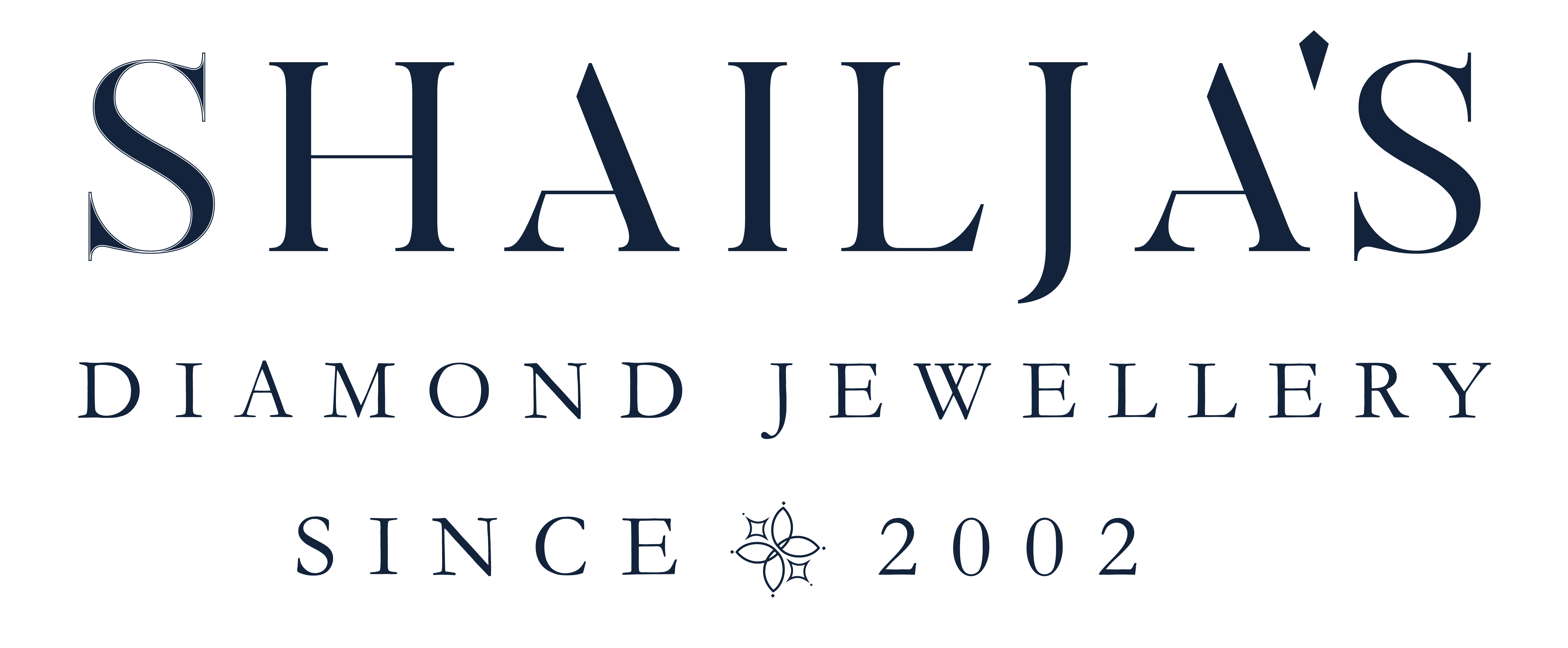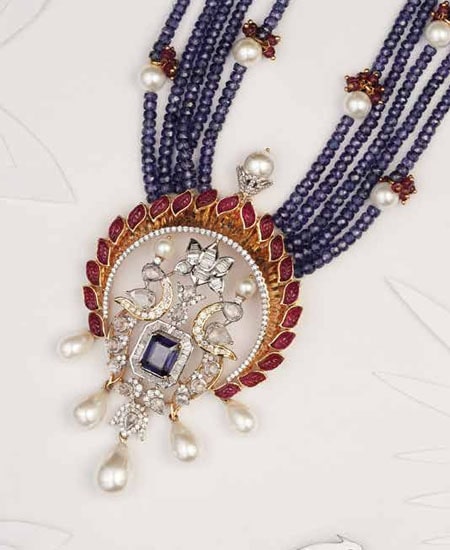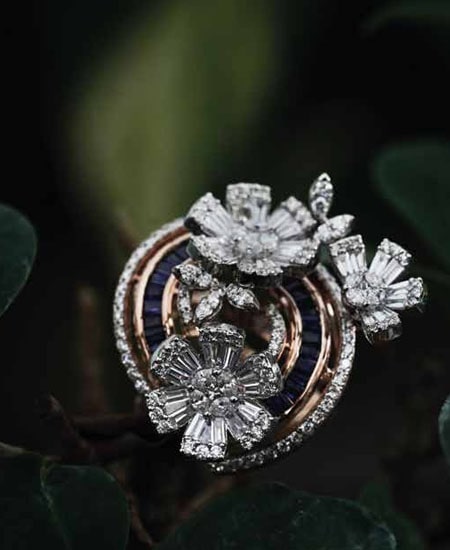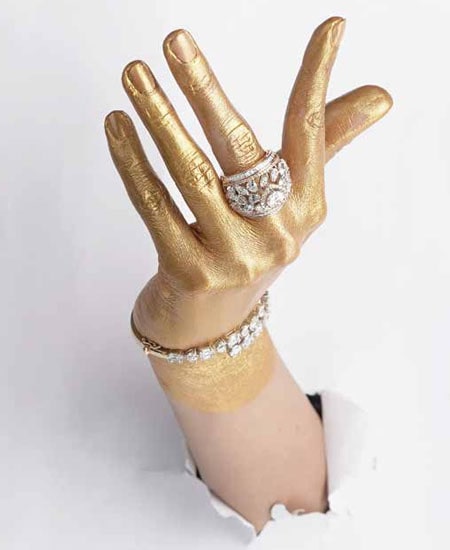Shipping and Handling
ShailjaDiamonds provides free shipping on all products within India.
For orders within India, our delivery date depends on the product selected as well as the shipping address provided by you. It may take 2 to 7 days.
We will ship your product via our delivery partner. Before attempting delivery Our courier partner will contact you for availability And you need to show your ID Card when the courier parcel comes to delivery.
Currently, we take orders for Delivery Only in India.
Payment
You can pay full amount prepaid, or we offer 50% amount you pay at the time of order as prepaid and remain amount you can pay at the time of delivery
There are no hidden costs or additional shipping charges. The total price is mentioned on the product page below the Product details.
Prices on Shailjadiamonds.com are subject to change without notice.
We accept VISA and Master Card (Indian cards only). You will need to key in your 16-digit Credit/Debit Card number and the 3-digit CVV Code (Card Verification Value - found on the back of the card) and complete the payment flow.
All Credit/Debit card details remain confidential and private. Shailjadiamonds and our trusted payment gateways use SSL encryption technology to protect your card information.
The refunded amount will be directly credited to your bank account after we receive your jewelry. Please mail or call our customer delight team with your bank account and IFSC code which can be found printed on your cheque book.
About Shailjadiamonds
Shailja's, a home-grown jewelry house, by a first-generation woman entrepreneur, our namesake. We opened our doors to the boutique over 20 years ago in 2002.
With our fancy designs according to fashion trends with quality assurance And we provide you with a quality product at an affordable price.
201, Nalanda Residency, opp. Jolly Residency, Vesu, Surat 395007
Buyback Policy
We offer a Buy-Back on all purchases made from Shailja Diamonds within India Only.
The product should be accompanied by the original product certificate and the original/ copy of the invoice for all exchanges for the Day Buy-Back period.
Any item that shows signs of wear or has been altered, resized, or damaged cannot be accepted for buy-Back.
In case the exchange value is higher than the value of the old product, the customer will have to pay the difference
Product
You can customize the gold karat and the diamond colour-clarity combination online as per your choice
No, we do not accept orders for custom Size
All diamond and gemstone jewelry bought from shailjadiamonds.com is certified by SGL, IGI, GIA, or HKD and all gold jewelry bought from Shailjadiamonds.com is BIS hallmarked, some of the most respected and trusted diamond grading bodies in the world. We will provide you with product certificates for all products.
Yes, we can arrange a duplicate for you for Rs 500. It will come with copy/duplicate written across the certificate as a watermark.
Absolutely! Our products are offered with no overheads like rent and inventory costs, so we happily pass on the benefit to our customers.
After purchase questions
If there are any problems with the quality of the workmanship of your piece we'll repair it free of charge and pay the shipping too. If you damage a piece, we'll repair it for you for a very reasonable fee plus shipping.
Any query? we are happy to help you contact us at [email protected] and +91- 9825606692
Diamond Buying Guide
1. Diamond Carat Weight
Diamond carat weight is the measurement of how much a diamond weighs.
- Diamond price increases with diamond carat weight because larger diamonds are rarer and more desirable. But two diamonds of equal carat weight can have quite different values (and prices) depending on three other factors of the diamond 4Cs: Clarity, Colour, and Cut.
- It is important to remember that a diamond’s value is determined using all the 4Cs, not just carat weight.
2. Diamond Colour Grade
The diamond colour evaluation of most gem-quality diamonds is based on the absence of colour.
· GIA’s D-to-Z diamond colour-grading system measures the degree of colourlessness by comparing a stone under controlled lighting and precise viewing conditions to master stones of established colour value. Many of these diamond colour distinctions are so subtle that they are invisible to the untrained eye; however, these distinctions make a very big difference in diamond quality and price
3. Diamond Clarity
Diamond Clarity Refers to the Absence of Inclusions and Blemishes
- Evaluating diamond clarity involves determining the number, size, relief, nature, and position of these characteristics, as well as how these affect the overall appearance of the stone. While no diamond is perfectly pure, the closer it comes, the higher its value
- The GIA Diamond Clarity Scale has 6 categories, some of which are divided, for a total of 11 specific grades.
- Flawless (FL) No inclusions and no blemishes visible under 10x magnification
- Internally Flawless (IF) No inclusions visible under 10x magnification
- Very, Very Slightly Included(VVS1 and VVS2) Inclusions so slight they are difficult for a skilled grader to see under 10x magnification
- Very Slightly Included (VS1 and VS2) Inclusions are observed with effort under 10x magnification but can be characterized as minor
- Slightly Included (SI1 and SI2) Inclusions are noticeable under 10x magnification
- Included (I1, I2, and I3) Inclusions are obvious under 10x magnification which may affect transparency and brilliance
4. Diamond Cut
A Diamond’s Cut Unleashes Its Light
- Diamonds are renowned for their ability to transmit light and sparkle so intensely. We often think of a diamond’s cut as shape (round, heart, oval, marquise, pear), but a diamond’s cut grade is about how well a diamond’s facets interact with light
- A diamond’s cut is crucial to the stone’s final beauty and value. And of all the diamond 4Cs, it is the most complex and technically difficult to analyse.
International Gemological Institute
International Gemological Institute, also known as IGI, is an organisation that certifies diamonds, gemstones, and fine jewellery. It is the largest independent lab in the world for this purpose. The institute was established in 1975 with Antwerp as its headquarters. They have offices spread across the world, including Hong Kong, New York, Los Angeles, Toronto, Mumbai, New Delhi, Tokyo, and several other places. Around the world, certificates issued by this institute instil trust in gemstone buyers and sellers.
It serves as a promise of authenticity and quality. Buyers from around the globe widely accept IGI certificates as a mark of excellence. The information about the diamonds and gems is stored in their database. You may get a copy of the report if the need arises.
Importance Of IGI Certification
The value of a precious stone depends on a lot of factors, including its finished quality.
a proper analysis can help to find out if a diamond is a natural one or not. It will also help you make out whether your gemstones are treated or altered. A certificate discloses all such things and helps you make an informed choice.
Reports that IGI Provides
IGI offers three types of reports. They are the diamond report, the coloured stone report, and the jewellery report.
Diamond Report: - It is a statement of a diamond’s quality. This report provides an accurate assessment of the 4Cs – the cut, colour, clarity and carat weight of a diamond. It is based on international standards. You can get this report for a diamond of any size. At these labs, each stone is analysed by experts using latest tools and techniques. Apart from the 4Cs, the stone is also analysed for any treatment or enhancement. Reports for coloured diamonds and lab-grown ones can also be availed. The detailed report is presented in an easy-to-understand format.
Coloured Stone Report: - This report states the gemstone’s exact variety. It also tells you about the stone’s cut, shape, carat weight, colour, and other details. If the stone has gone through any treatment, you will be able to know about it from this report. This report will tell you if the stone is a natural one or not. You may even get to know about the stone’s country of origin if you ask for it. it becomes important to have them analysed before you buy them. You will know for sure whether the stone you are buying is real or fake.
Jewellery Report: - This institute was the first lab to offer such a report. Experts here analyse both the metal and the mounted stones and provide a complete report on the jewellery. Details such as the content and weight of the metal are clearly stated. Also, the stone’s details are provided. These include the stone’s cut, clarity, shape, colour, finish, weight, etc
You will be able to get a full report without causing any harm to the stone setting. That way you can be sure of the jewel.
A stone with an IGI certificate will provide you with all the details you need to know to make the right choice.
BIS Hallmark
Explanation About BIS Hallmark
BIS Hallmark is a system that helps you determine the purity of gold and silver jewels sold in the country. It is a certification issued by the Bureau of Indian Standards (BIS), the national standards organisation in India. The certification given by this body, which is called BIS Hallmark Certificate, confirms that a piece of gold jewel adheres to the standards set by BIS.
- Hallmarked gold ensures that the metal used to make the ornament conforms to international and national standards of purity and fineness.
- BIS hallmarking has become the benchmark of trust for a large number of gold buyers in the country.
Why go for Gold Hallmark
- in the absence of any method to determine the purity of the metal, the buyer is always at a risk. As a buyer, you will have to accept the quality of the metal as per the claims of your jewellery. Gold is a precious metal. If you are investing your money to buy it, why not be sure about its quality? This way, you will know that the metal you are buying is worth the money you are spending on it. When you buy gold hallmarked by the Bureau of Indian Standards, you can be about the quality of the metal.
- Whether you buy Any Gold Jewellery Or Diamond Nose Pin or any other Products Always go for hallmarked Items
What is the Importance of Hallmark Certification?
No one can determine the purity of gold by touching or looking at it. Even experienced jewellers can’t assess the purity of gold without proper evaluation.
A hallmark certification can resolve all such issues. It can provide all the necessary details and confirm the purity of the gold.
Hallmark spells trust and confidence in the gold jewellery industry.
BIS Hallmark Consist of Five Components
BIS Standard Mark: It is a triangular mark. It indicates that a third party assessor has done the hallmarking after proper evaluation and confirms the purity of the metal.
Purity Grade: It is a fineness number that corresponds to the carat value of gold. The word carat or karat is an indication of the purity of gold.
In its purest form, gold exists as a 24 carat or 24k metal. But 24k gold is not suitable for making gold ornaments, so it is often mixed with other metals to form strong and durable alloys. In India, the carat value of gold ornaments usually ranges from 22k to 14k and is measured in three digits.
Hallmarking Centre’s Mark: This is the mark of the hallmarking centre or the third party assayer that has been approved by the BIS. The mark is embossed on every item assessed and verified for purity at that centre.
Year of Marking: This indicates the year in which the item was hallmarked. The year of marking is denoted by a code letter decided by BIS.
Jeweller’s Mark: It is the mark of the jeweller or the manufacturer of the item. Each jeweller certified by BIS has a unique logo that is embossed on their ornaments.
Here are a few diamond setting options that will help you get the sparkle you want, at the design you choose and the price you want.
Prong Setting
This is a classic setting, generally used to hold in place a solitaire. It features a single diamond held in place with four or six prongs, usually used in classic engagement rings or single stone diamond rings. Also known as the claw setting, this style of mounting minimizes how much metal is used and so allows more light to pass through the diamond. Four prongs are generally the most preferred in setting princess diamonds.
Channel Setting
Used frequently to create breath-taking bands for weddings and anniversaries, the stones are set next to one other, with no separations. The diamonds are secured between vertical metal walls, to create a smooth channel. The outermost ridge of the metal used – gold or platinum is then worked over the edges of the diamonds so that the girdle is protected and a smooth appearance is created.
Bar Setting
This setting is similar in appearance to the channel setting and is used quite frequently in diamond necklaces and bracelets. A band of diamonds is created, where each stone used is held together by a long thin bar between two diamonds. This is perfect for a contemporary meets classic look.
Bezel Setting
A stone set with a bezel setting is embraced by a rim of metal that holds it together by the girdle, to secure it in place. This not only creates the illusion of a larger stone, but the bezels can be created in scalloped edges, straight edges, or can even be molded and shaped according to the shape you chose to fit the stone.
Illusion Setting
To create the ‘illusion’ of a larger diamond, the illusion setting is used very interestingly. Smaller stones generally princess cuts are set next to each other. This is setting requires skill and intricacy from the jeweler to create the perfect piece.
Cluster Setting
A large center stone surrounded by smaller stones, that’s the cluster setting. It’s a great way to showcase a larger ‘hero’ diamond and is perfect for rings or earrings.
Gypsy Setting
This is a popular setting used frequently in men’s jewelry. Here, the band is generally one continuous dome-shaped piece with a stone inserted in the middle. There are no prongs, providing a clean and smooth look.
Pave Setting
The pave setting uses tiny beads along with diamonds, creating a feeling of the jewelry being encrusted with stones.
Gemmologists have classified these gems into different categories based on their chemical and physical properties. To classify them, gemologists evaluate the stones for their atomic makeup. This helps them analyse their colour, their growth, and whether they are natural or treated. In this article, we give you a comprehensive outline of different types of diamonds and their features.
How Do We Classify Diamonds?
- When buying diamond necklaces or rings or bangles, most people look for the cut, clarity, carat, and colour. (These features are called the 4Cs of diamonds. We will come to them later.) Seasoned buyers, however, also consider the type of diamond before they make a purchase. These sparkling gems are carbon compounds. They are basically made of pure carbon, but they often contain some trace elements such as boron and nitrogen. Such elements are acquired naturally during their formation. In some stones, they are intentionally added. This is often done during the process of synthesis or treatment in a lab
- there are two ways to classify diamonds, namely the consumer way and the technical way.
The Consumer Way of Classifying Diamonds
Most consumers do not get into the technical aspects of gemstones when they buy jewellery. Consumers often classify diamonds into four types based on their appearance. The four types are as follows:
- Natural diamonds What do you think of when you hear the word diamond? A white sparkling rock found somewhere in the mines, right? That’s exactly what natural diamonds are! These naturally occurring gems are white or colourless.
- Treated diamonds These are artificially enhanced versions of natural diamonds. These gems are mined just like regular diamonds. However, we manipulate their attributes through different kinds of treatments to make them look better. One of the treatments they are subjected to is inclusion filling. In this treatment, special material is used to hide the inclusions in the stone. Another treatment is colour enhancement. Treatments are usually done on diamonds that cannot otherwise be sold in their natural form. Treated diamonds are sold for dramatically lower prices than their natural counterparts.
- Man-made diamonds are also commonly known as lab-grown diamonds. Man-made gems have become a trend recently. And their popularity is on the rise owing to the fact that they are technological products. With the evolution of the technology behind man-made diamonds, their manufacturing becomes cheaper. They are only going to become cheaper in the coming years.
- Natural coloured diamonds These are a rarity in the world of diamonds. They occur in a variety of colours, such as purple, blue, red, green, and black. The most common colours are, however, pink and canary yellow.
The Technical Way of Classifying Diamonds
- As a buyer, it’s important for you to be aware of the technical information of classification. Wondering why? It’s because the presence of trace elements, even small amounts of them, can impact the stone’s price drastically. They also cause the formation of impurities in the stone.
- So what are impurities and how are they formed in a gemstone? In the carbon lattice structure in diamonds, nitrogen or other trace elements often replace carbon atoms. These carbon substitutes move inside the structure and often cluster together. This constitutes chemical impurities, which are not visible to the naked eye. However, they affect the gemstone’s appearance to a considerable extent. So here are the different types of diamonds based on their technical differences.
- Type Ia This type of diamond has large clusters of nitrogen in the crystal lattice. As a result, the stones emit a yellowish tint. The nitrogen atom aggregates, especially the ones in groups of three, absorb the blue spectrum wavelength of visible light. Therefore, the light they reflect appears yellow.
- Type IIa These are the most valuable diamonds sought by investors and collectors. They are rare and contain negligible or no nitrogen impurities. They form under high pressure for a long period of time. They have an uneven shape. The lack of impurities makes it reflect light as it is and gives it a spectacular appearance. Almost all of the world’s most popular diamonds fall under this type. The Kohinoor is a famous example.
- Type Ib These are less common than the other types of diamonds. In type IIb diamonds, single nitrogen atoms are scattered in the lattice structure instead of clusters. This makes the diamond absorb the blue spectrum wavelength of visible light. And therefore, these types of diamonds have an intense yellow, brown, or orange colour.
- Type IIb Diamonds classified as type IIb lack nitrogen atoms. Instead, they contain boron as the trace element. The presence of boron makes type IIb diamonds conduct electricity. It also makes them appear a shade of either blue or even bluish-grey as boron absorbs the red spectrum wavelength of visible light. This type of diamond is also rare and, therefore, very valuable.
Most people think that the type of a diamond depends on its cut, colour, clarity, or carats. These features that make up the 4Cs are qualities of diamond grading. They are not the types of diamonds.
Round, cushion, emerald, princess, baguette, oval, marquise, trillion, etc. are some of the popular cuts used for shaping a diamond. Based on the colour, diamonds are graded alphabetically such as D – F (totally colourless), G – J (near colourless), K – M (with slight tints), N – R (very light yellow), and S – Z (very light yellow or brown). Similarly, these gems can be divided into different clarity grades such as FL (completely flawless), VVS1 and VVS2 (very very slightly included), and VS1 and VS2. Stones of lower clarity come under the grades SI1, SI1, I1, I2, and I3.
taking your diamond knowledge to the next level only has advantages. Knowing the different types gives you the upper hand to make informed choices. Being aware of both the physical and the chemical properties underlying their classification will help you invest in the right stones.
- diamonds can lose their sparkle with time. Even though diamonds are the hardest substance known to us, they can chip at the edges. If you are not careful, they may even fall out of the setting thereby making a piece of ornament practically useful.
- if they are well maintained, your diamond pendants, bangles, earrings, and rings can look brand new for years. Just as we help you find the perfect diamond jewellery, we are also here to help you take care of your diamonds. Here are a few tips.
- Diamond rings or bangles should also not be worn when applying hairspray, creams or lotions. This can temporarily discolour the diamonds and make them lose their lustre. It is important to note that while diamonds repel water, oils and grease can easily stick to diamonds. This holds true for cut and uncut diamonds.
- you clean your diamonds regularly; you cannot expect them to sparkle as they should. Diamonds are easy to clean. All you need is warm water, a soft toothbrush, and mild soap. Do not use toothpaste to clean diamonds. Soak your diamonds in soapy water for a few minutes and gently clean them with a soft-bristled toothbrush. Along with the face of the diamond, also clean the back where dirt is easily accumulated. You can then wipe it dry with a soft, lint-free cloth. If you are cleaning your diamond jewellery in the sink or washbasin, make sure that you have blocked the drain before you start. Ideally, diamonds should be cleaned once a fortnight. Do not use any chemicals to clean your diamonds. This can erode the metal prongs or even dissolve them.
- do not use a hard toothbrush to clean your diamonds. If a diamond gets caught in your clothing, do not pull it out. Gently disentangle it from the cloth. You really don’t want to spend a day searching the floor for a tiny diamond.
- When it comes to diamonds, it is important to know when to wear them and when to leave them in your jewellery box. Though diamonds can be worn even on a daily basis, they are not ideally suited to all occasions.
- Diamonds need to be protected not only against getting lost or being stolen but also against damage. When a diamond rubs against another diamond, the gemstones can scratch each other. Similarly, your diamonds may also scratch and damage any other jewellery they come in contact with
- It is a wise idea to invest in a fabric-lined jewellery case with individual compartments for all your diamond jewellery. Alternatively, you could wrap each piece of diamond jewellery in soft tissue.
- A jeweller can also help shine up your diamonds with an ultrasonic cleaner. This uses a vibrating fluid to clean the dirt and grime accumulated on diamonds and metal. When it comes to diamond-studded rings, ensure that your ring fits well. If your ring is loose, your diamond will undergo more wear and tear.



